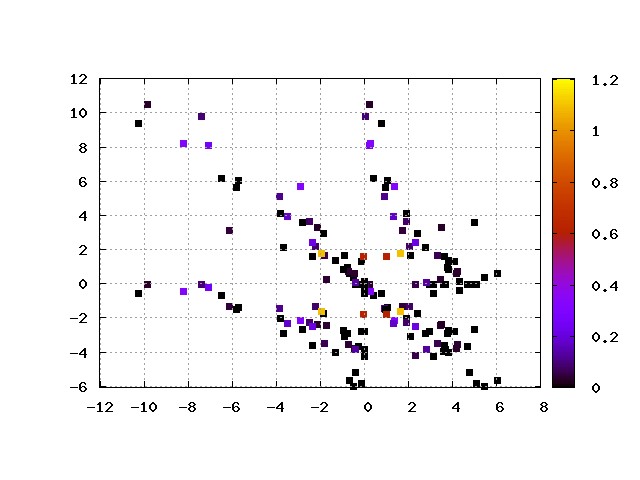Organisation of signal flow in directed networks

Complex data and systems can often be represented as directed graphs. Many of such systems implement some sort of signal processing. In this project we address the question that how does the structure of the network influence the signal processing properties. To do so, we introduced a novel edge-based measure to describe the convergence or divergence of the information on a given edge based on the shortest paths passing through it. This measure, the convergence degree, provides additional information to the traditional measures, such as the clustering coefficient or degree distribution, so it is useful to differentiate real-world networks or random graph models with different information processing properties.

An important problem in network theory is the problem of representation. We would like to map the graphs to a space where isomorphic graphs are identical and graphs with similar structural properties are close to each other. The convergence degree is applicable to implement such a space if we map the edge convergences to the vertices. This representation allows us to examine the roles of specific vertices in the information processing of the network, and also can be useful in the comparison of different networks. The main application of these tools in this project is the analysis of the large-scale cortical network of brain areas.
The methods described above help us to describe the geometry of the graph as a space where dynamic processes can take place. The next step of the research is to model these processes by defining the appropriate differential operators for directed networks. If we had the reaction-diffusion equation specified, we could build dynamic models of real world processes, e.g. information processing of cortical areas, that can be fitted to experimental data.
People working on this project
Fülöp Bazsó, Mihály Bányai, Tamás Nepusz, László Négyessy
Publications related to this project
M. Bányai, T. Nepusz, L. Négyessy, F. Bazsó Organisation of signal flow in directed networks, arXiv:1007.0566v1.
M. Bányai, T. Nepusz, L. Négyessy, F. Bazsó Convergence properties of some random networks, 7-th International Symposium on Intelligent Systems and Informatics 241-245, DOI: 10.1109/SISY.2009.5291157 , 2009. SISY 2009. Subotica, Serbia.
Négyessy L, Nepusz T, Zalányi L, Bazsó F.: Convergence and divergence are mostly reciprocated properties of the connections in the network of cortical areas. Proceedings of the Royal Society B
Nepusz T., Négyessy L., Tusnády G., Bazsó F.: Reconstructing cortical networks: case of directed graphs with high level of reciprocity. Chapter 8 in Handbook of Large-Scale Random Networks, eds.: Béla Bollobás, Róbert Kozma, Dezső Miklós. Springer-Verlag
